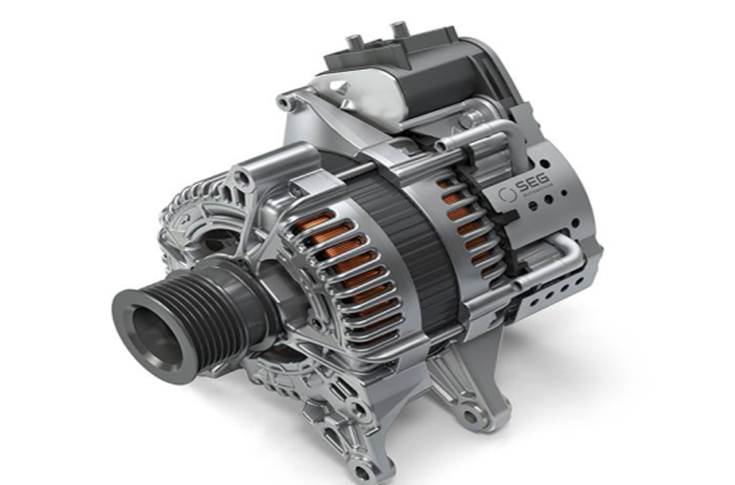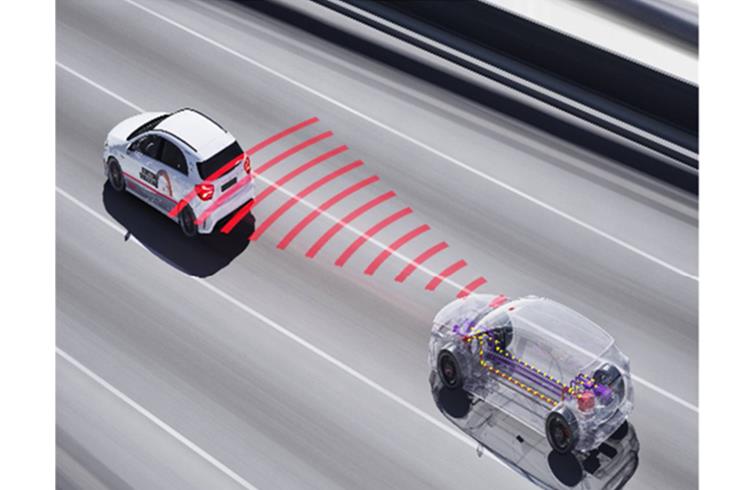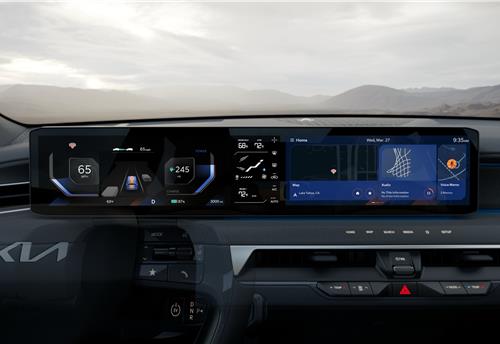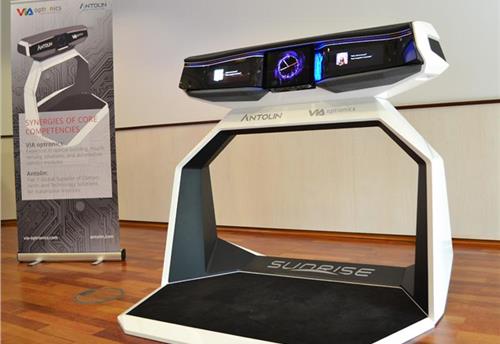SEG Automotive and FEV introduce new A48V concept vehicle
The concept vehicle, which FEV developed in cooperation with SEG Automotive and the Chair of Internal Combustion Engines at RWTH Aachen University, uses a 48V BRM in combination with an electric compressor to significantly improve responsiveness, efficiency and comfort.
Development service supplier FEV and automotive component supplier SEG Automotive has revealed a new concept vehicle called A48V, which is equipped with 48V mild hybridisation technology powered by SEG Automotive's Boost Recuperation Machine (BRM).
With its A48V, FEV demonstrates the real-life driving benefits of the 48V technology. The concept vehicle, which FEV developed in cooperation with SEG Automotive and the Chair of Internal Combustion Engines at RWTH Aachen University, uses a 48V BRM in combination with an electric compressor to significantly improve responsiveness, efficiency and comfort. The use of the BRM from SEG Automotive is said to improve the response time of the four-cylinder engine significantly and at the same time decreases fuel consumption.

48V Boost Recuperation Machine
Anil Kumar M R, managing director, SEG Automotive India, said, “48V mild hybridisation offers great potential to increase the efficiency of conventional powertrains. For this purpose, a powerful 48V belt starter generator, in this case, the BRM from SEG Automotive, replaces the conventional 12V generator. This requires only minor modifications of the powertrain and therefore entails comparatively low costs. The 48V BRM enables hybrid functions such as brake energy recovery (recuperation), electrical torque support, load point optimisation and particularly smooth start/stop engine starts. In addition, the increased electrical power enables the use of power-hungry consumers or safety features. All the while the BRM from SEG Automotive significantly reduces CO2 emissions, helping the OEMs to reach the targets of CAFE norms mandated by the Indian government.”
Better torque delivery for better efficiency
According to SEG automotive, with the aid of the electric compressor, the maximum torque of the combustion engine is reached at just 1600 rpm -- 650rpm earlier than in a standard AMG A45 vehicle. In addition, the boost function of the BRM provides additional torque to the combustion engine, which is noticeable driving off after a stop or at low rpms. It also comes with start/stop functionality. The high torque capacity of the BRM claims to ensure an almost immediate engine start, which effectively avoids comfort-impairing resonances, which can occur with conventional 12V start/stop systems.
With BRM, part of the kinetic energy is recovered and stored in the 48V battery. It also comes with a coasting function. During coasting phases, the combustion engine is decoupled from the transmission and switched off. As a result, the vehicle can maintain kinetic energy and coast for longer by avoiding the friction losses of the combustion engine. When the driver wants to accelerate, the combustion engine is smoothly and immediately restarted and re-engaged into the powertrain. In real operation, the BRM saves up to 15 percent fuel and to the same degree, the CO2 emissions.
Analysing traffic for intelligent braking and acceleration
The coasting function was further optimised by a predictive recuperation function. For this purpose, a camera-based sensor system detects the vehicles travelling ahead of the car. As the driver takes his foot off the accelerator, a prediction algorithm calculates whether it makes sense to switch into coasting mode or whether deceleration is necessary in order to avoid tailgating. The BRM automatically regulates the degree of deceleration so that the mechanical brake system is not required.
SEG claims that this improves driver’s comfort who does not have to intervene. It also raises the amount of energy recovered, which has again a positive effect on fuel consumption. The predictive coasting and recuperation strategy is a prime example of how the efficiency of the powertrain can be significantly increased by intelligent software functions.
RELATED ARTICLES
Marelli Talbros Chassis Systems wins Rs 1,000 crore business from European OEM
The order, to be executed over an eight-year period, is for the supply suspension arms tailored for both conventional in...
Kia launches customised NBA display themes for North American market
Display Themes is a customised service that supports a personalised vehicle experience, allowing users to customise the ...
Antolin and VIA Optronics unveil versatile vehicle cockpit concept
The Sunrise vehicle concept cockpit, which is engineered for seamless transitions between manual and autonomous driving ...





 By Autocar Pro News Desk
By Autocar Pro News Desk
 11 Dec 2018
11 Dec 2018
 10918 Views
10918 Views









